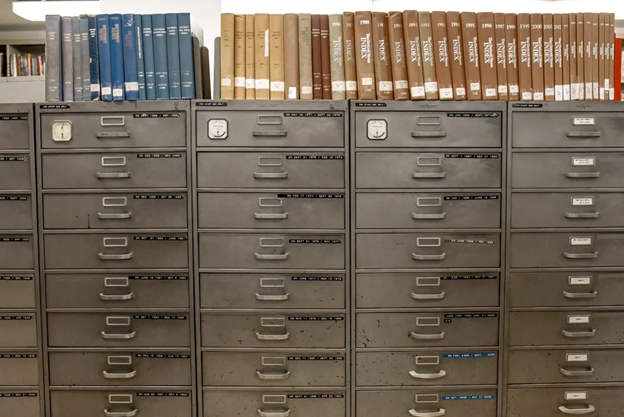Solving the Puzzle: How to Overcome Gaps in Your Family History Research
October 7, 2024
Researching your family history can be an incredible journey but it can also be somewhat frustrating. Like a missing puzzle piece in an otherwise fully completed picture, having gaps in your family history is enough to drive anyone mad.
Not to worry––we’ve got you covered. Here are a few simple ways to overcome gaps in your family history, get to the bottom of missing information, and sort out conflicting records in your research.
The Power and Challenges of Census Records
Jennifer Rizzo, a Colorado-based genealogist and family historian here at The Writers For Hire, notes that if you live in the United States, the national census records are a great place to start with any family research.
“In the US, we have census records that started back as early as right after the Revolutionary War.” That means there is a ton of information available.
Rizzo has these tips for making the most out of the American census records:
Use historical details to set the scene
If you haven’t ever done it before, Rizzo suggests simply going online and searching for missing ancestors using the census records.

These records will show you everything from who was in the household, if they were employed or not, what they did for a living, and more.
She adds, however, that historically, the records only listed men in a household by name and never the women and children, which means you might not find listings on someone if they were female or underage during this time.
The same goes for people who were enslaved.
However, knowing the names and occupations of the people who had potentially lived alongside your ancestors can add vibrant detail to your family’s story. It can also help you unlock information that will eventually lead you to more facts about your family.
Get used to historic handwriting
Another issue with using historical census records is that they were notoriously written by hand, after which whoever transcribed them may have inadvertently slipped in a few errors. “A lot of times, the information is misspelled or just completely wrong,” says Rizzo.
For this reason, it’s best to always have a look at the original record, even if it means tackling old, tricky handwriting. Getting familiar with how people used to write can help you make sense of what’s on the page. So, it’s worth spending some time learning about historical handwriting styles—it can make a big difference when you’re piecing things together.
Be creative with spelling
What if you can’t find any record of your ancestor at all? A common issue with using census records is the inconsistent spelling of surnames. This was often the result if family members were illiterate and surnames were phonetically spelled.
For this reason, it’s a good idea to be on the lookout for surnames that are similar to the one you’re looking for. Rizzo advises being flexible with spelling variations when searching databases like FamilySearch or Ancestry. Try spelling the surname as you would say it and see what you get—it might turn out to be exactly the spelling your ancestors used.
Leverage Online Databases
As mentioned above, FamilySearch and Ancestry are great websites to find information on your family history, right from your desk.

FamilySearch is a free database maintained by the Church of Latter-Day Saints, and it has extensive digitized and searchable records from all over the world. This can make the process of finding family records quite simple if you know what you’re looking for.
A challenge that might creep up here is that some of the records you find might be written in another language. In this case, Rizzo says the simplest thing to do is to use Google Translate.
However, if the language is no longer being used globally, such as Old German, Google might not be able to help. In this case, Rizzo suggests that the best thing to do is enlist the help of a genealogist or archivist with experience in that language. “A lot of the people who work at archive centers are experts in reading the older languages.”
Interview your Family
Often, finding the information missing from our family tree is as easy as asking a family member. “They might say they don’t know anything, but they may have a bit of information that will be helpful to you,” says Rizzo. When you sit down with your family member, make sure to enquire whether they or anyone else has possession of an old family Bible. Family Bibles are extremely useful for genealogical research, as they often have a list of names and birthdates in the front that you can use to flesh out your family tree
Even if all they can tell you is where your family is from or where your ancestor was born, this, too, can prove to be extremely valuable information. Rizzo notes that if you know where someone was born, that’s a great lead, as you can visit that town and search its historical documents. “A lot of times in smaller towns, libraries have collections that you can’t get online, like books that will tell you about who landowners were in a certain area during a certain time, or church records during a certain time.”
When you visit a town related to your family history, make sure to enquire about any family Bibles that might be in the collection at the local library. You might be lucky and find one connected to your ancestors.
Visit Local Archives
Sometimes, while researching your family’s history, Rizzo says, you don’t know what you’re looking for until you find it. “You can call libraries; you can call archives. But if you don’t know a document or a resource exists, the only way you’re going to know about it is to visit these places and find it.”

Unfortunately, travelling to foreign countries to do family history research is not a possibility for everyone.
That is why it is always essential to first check whether any family information stored in foreign records is available online.
In addition, don’t be shy about contacting the archive in question if you can’t find what you’re looking for.
They might be able to do some digging on your behalf.
Another aspect to consider is that borders change over time, which means that your ancestors might have lived in an area that was part of a different country back in the day. For example, Rizzo explains that ancestors from Germany might have lived in what was once Poland, meaning their historical records could be in Poland, not Germany.
National records may also change ownership, which is what happened with former UK-controlled territories. “Figure out where the records are located, and then figure out whether or not you can access them online, or if it’s something that you or someone else needs to access in person.”
Rizzo also notes that if you do need to visit an archive physically, it’s best to make an appointment. “They have people who can help you, and it’s been my experience that people are very friendly and willing to help you find the documents you need.”
Use Historical Details to add Context
Sometimes, no matter how hard you try, you just can’t find the information you’re looking for. In these cases, bulk up your story with general historical facts and details from the time.
Knowing what life was like during your ancestors’ time can add rich layers to their story, even if you don’t have every fact about them. “Pay attention to the small details and just dig around a little bit,” says Rizzo, “You can uncover a lot of cool facts that you had no idea about before.”
This can be especially useful if you are planning on writing a family book, because, as Rizzo says, if all you have is a list of names, it’s not going to be a very exciting story.
As we mentioned before, the best place to start is with census records, as they can reveal details about your ancestors’ lives that will paint an intriguing backdrop beyond the basics like names and dates.
Rizzo also recommends doing general research about the time period your ancestors lived in. For example, if a male ancestor lived in Georgia in the 1860s, he likely served in the Civil War, and military records could provide further insights.
“What did they do in the military? Were they injured in the military? Where did they serve? And there’s actually a lot of information available the more you dig. So, just using the records that you find, you piece together details about their lives.”
Get Professional Help
Lastly, if you’ve tried all of the tips above and still can’t get anywhere, the best thing to do is to enlist the help of a professional genealogist. Genealogists have experience overcoming seemingly blank branches of a family tree and might have better insight into where to look to find missing information.
Rizzo recommends making sure you properly vet your genealogist before hiring them, as you need to be sure that they have experience not just with research but with the location your family is from.

“If you Google genealogy, you’ll find tons of people who claim to be genealogists. You need to interview people and ask them questions about projects, things they’ve worked on in the past, and brick walls they’ve been able to get around.”
Rizzo adds that genealogists often specialize in certain areas of history or locations, which means you need to make sure that they are the perfect match for your project before getting started. “Talk to them; ask a lot of questions; see if they really are able to help you.”
Researching your family history can be incredibly rewarding, despite the challenges along the way. If you hit a dead end, don’t lose hope—there are often solutions you haven’t yet considered. With the tips above and a focus on the bigger picture, you’ll be well on your way to preserving your family’s legacy for generations to come.































